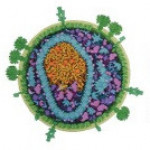Despite big strides in education, prevention and treatment, communities of color and transgender people are still left behind in the fight against HIV.
The Centers for Disease Control and Prevention (CDC) released its HIV Surveillance Supplemental Report, which highlights recent progress: The rate of new HIV cases decreased by 7.9 percent between 2010 and 2015.
This trend can be attributed to advocacy and access to pre-exposure prophylaxis (PrEP) and to health insurance through the Affordable Care Act.
Despite these advances, the report highlights notable disparities among demographics where new HIV cases are still occurring, which include gay, bisexual and queer-identified men between ages 25 and 34 who identify as Latino or Black. Young Black men who identify as gay, bisexual or queer make up roughly 42 percent of new HIV cases in the United States. The report does not track new HIV cases or prevalence among trans and gender-non-conforming communities.
Even though there is good news, the fight against HIV is not won until gains are made in every community. As HIV advocates embark on the mission of zero new HIV cases, it’s important to remember that an individual living with HIV who has an undetectable viral load cannot transmit the virus. Easily accessible health care that’s community-driven and stigma-free is critical to achieve undetectable viral loads.
Empowered health care also means increasing access to PrEP as well as to effective treatment and compassionate health care for those living with HIV and other chronic illnesses. At the beginning of this year, Howard Brown Health launched a same-day start program, empowering patients to begin HIV treatment the same day they test positive for HIV. Since the program’s launch, many of our patients have reached HIV viral load suppression within the first month of treatment.
Key findings in the CDC report reinforce the importance of addressing the socioeconomic barriers that prevent health equity, such as lack of stable housing, transportation, job security, food security and mental health. It is not a coincidence that communities most affected by poverty share the highest rates of new cases.
Strategies that focus on treating the whole person by providing safety net programs are vital because they remove barriers impairing well-being and help access life essentials, such as housing, employment and food. Last year, Howard Brown Health’s programs handed out 2,640 transportation vouchers for medical appointments. Our weekly food trucks at our Englewood clinic provide access to healthy food, an essential element of most HIV regimens.
While communities around the country have the interventions necessary to eliminate new HIV cases, for health care providers to make progress, they must be able to focus on the communities that have been left behind.
Gay, bisexual and queer men of color and trans people need our collective support. Groups like Howard Brown Health need readily available quality data on all affected communities, which is why tracking incidence and prevalence in trans and gender-non-conforming communities is critical. It’s important that providers stand with their patients, not just as practitioners but also as neighbors, coworkers, family members and friends who remain resolved to prioritize the health and well-being of marginalized individuals.
If nothing else, the release of the CDC report reminds advocates around the country that while Americans are so close to achieving a generation free of HIV, in some communities the work is just beginning.







Comments
Comments